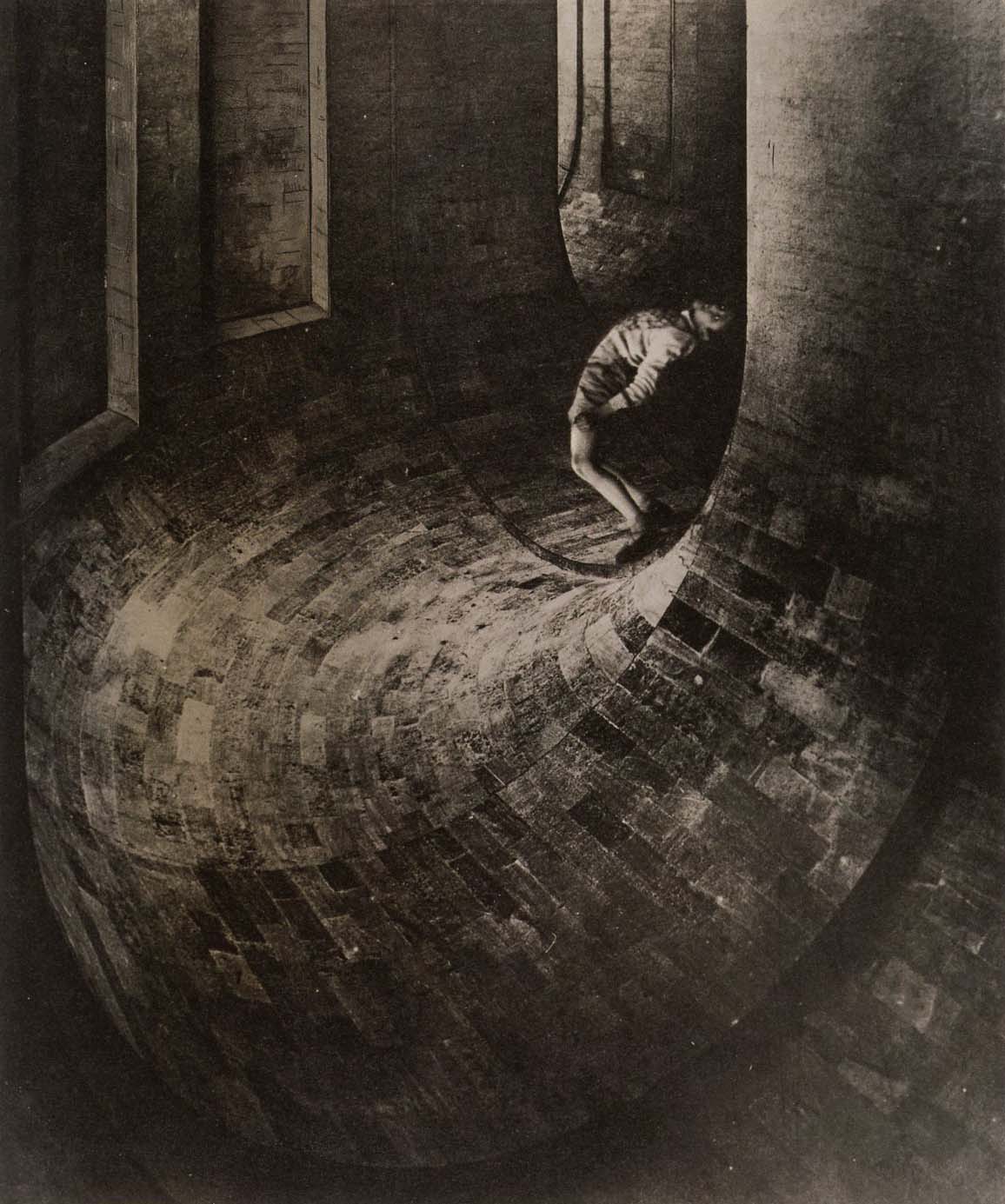
Le Simulateur (The Simulator) by Dora Maar, 1936
I have encountered this picture by Dora Maar, constructed in 1936, on several occasions in exhibitions of Surrealist art and photography and its power to unsettle is the same every time. There is something disturbingly Gothic and uncanny about the weird curving chamber. Is this a place of incarceration and chastisement, a subterranean dungeon where the stone floor is warped for maximum discomfort, or some kind of antiquated sewer system prone to noxious flooding at any time?
The boy’s behavior is inexplicable. Are we witnessing a game, a self-elected ordeal, or an involuntary posture of madness? The architecture is like a centrifuge, its lines of force rotating unstoppably toward him, and he submits to their energy, arching his body to rhyme or become one with the chamber, as though the space is a projection of an impulse inside him. The French title is Le Simulateur, sometimes translated as The Simulator, which reinforces the idea of willing replication, though its more direct meaning in English is “pretender” or “faker.”
He is looking in our direction. At this scale, it’s not easy to see that Maar has scratched out his eyes, blinding him. That might suggest that the picture is intended to make us think—like the Surrealists who were its first audience—about interior vision constituting the deeper reality. From that perspective, the image could signify a form of liberation rather than confinement, though that doesn’t make the oppressive setting, or the potential psychic revelations, any less uncomfortable. Then again, perhaps he sees nothing because he is only a fake, who deserves to be punished in the darkness like some wretch in a savage fairytale.
Maar made the image by fusing an inverted photograph of the vaulted ceiling of the Orangerie at Versailles with a youth removed from a street picture. She painted out the windows to entomb the boy and then re-photographed the montage. The outcome is a gelatin silver print. The original photograph of the vault with the windows intact can be found online. There is also another less eerie treatment of the image, with three disconnected protagonists, titled The Silence. The upended vault can lead to confusion and in Angels of Anarchy: Women Artists and Surrealism the photograph is printed upside down, turning the boy into a bat-like curiosity, dangling from the ceiling. The violent circular momentum drains from the picture.Maar would later sever all connections with Surrealism. In Le Simulateur, she had devised one of the movement’s most enduring and emblematic photographs.
See all Exposure columns

